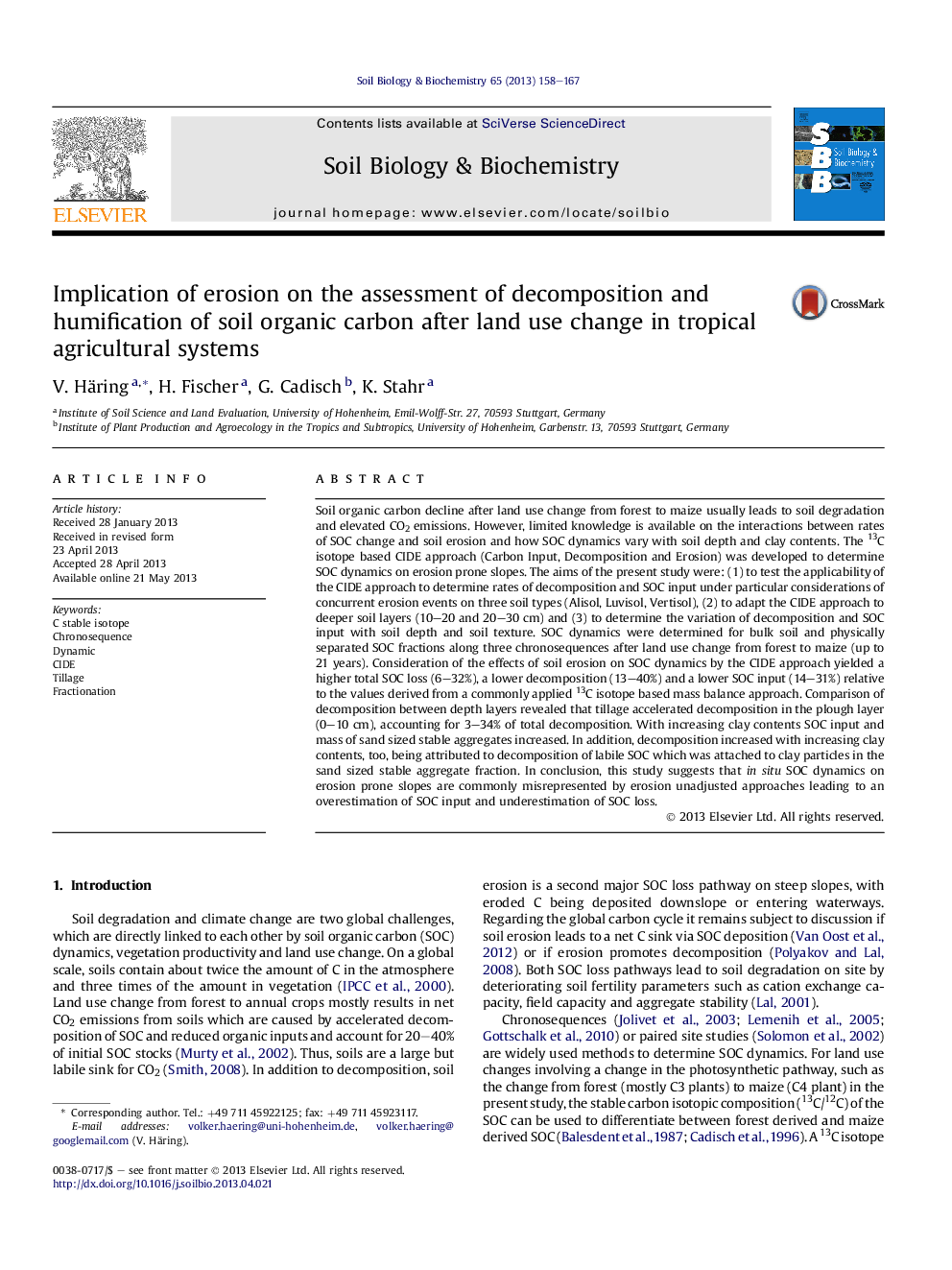| Article ID | Journal | Published Year | Pages | File Type |
|---|---|---|---|---|
| 8365209 | Soil Biology and Biochemistry | 2013 | 10 Pages |
Abstract
Soil organic carbon decline after land use change from forest to maize usually leads to soil degradation and elevated CO2 emissions. However, limited knowledge is available on the interactions between rates of SOC change and soil erosion and how SOC dynamics vary with soil depth and clay contents. The 13C isotope based CIDE approach (Carbon Input, Decomposition and Erosion) was developed to determine SOC dynamics on erosion prone slopes. The aims of the present study were: (1) to test the applicability of the CIDE approach to determine rates of decomposition and SOC input under particular considerations of concurrent erosion events on three soil types (Alisol, Luvisol, Vertisol), (2) to adapt the CIDE approach to deeper soil layers (10-20 and 20-30Â cm) and (3) to determine the variation of decomposition and SOC input with soil depth and soil texture. SOC dynamics were determined for bulk soil and physically separated SOC fractions along three chronosequences after land use change from forest to maize (up to 21 years). Consideration of the effects of soil erosion on SOC dynamics by the CIDE approach yielded a higher total SOC loss (6-32%), a lower decomposition (13-40%) and a lower SOC input (14-31%) relative to the values derived from a commonly applied 13C isotope based mass balance approach. Comparison of decomposition between depth layers revealed that tillage accelerated decomposition in the plough layer (0-10Â cm), accounting for 3-34% of total decomposition. With increasing clay contents SOC input and mass of sand sized stable aggregates increased. In addition, decomposition increased with increasing clay contents, too, being attributed to decomposition of labile SOC which was attached to clay particles in the sand sized stable aggregate fraction. In conclusion, this study suggests that in situ SOC dynamics on erosion prone slopes are commonly misrepresented by erosion unadjusted approaches leading to an overestimation of SOC input and underestimation of SOC loss.
Related Topics
Life Sciences
Agricultural and Biological Sciences
Soil Science
Authors
V. Häring, H. Fischer, G. Cadisch, K. Stahr,
